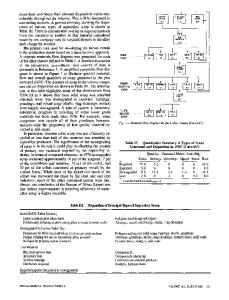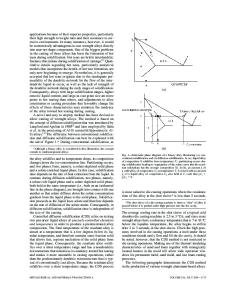Physical metallurgy of recycling wrought aluminum alloys
- PDF / 1,316,084 Bytes
- 5 Pages / 603.28 x 788 pts Page_size
- 26 Downloads / 479 Views
INTRODUCTION A N appropriate question to ask ourselves is the following: "What is the particular earmark or distinctive characteristic of"recycle metallurgy"-- as contrasted, say, to our ordinary everyday metallurgy--that it merits special discussion at a session such as this, today?" The answer to that question, I submit, lies in the problems caused by the alloy compositional degradations that we are obliged to accept as an inherent hazard of any program of reusing recycled metal stocks. Such compositional degradations can be of three principal types, namely: (1) significant deviations from the specification amounts of the major and minor alloying elements; (2) a gradual buildup in the amount of one or more of the normal residuals; and/or (3) significant contamination by one or more elements that are simply not an ordinary concern in aluminum metallurgy. Each of these types of compositional deviations can lead to quite different types of problems. To circumvent those problems so successfully that alloy utility and producibility are neither sacrificed nor impaired is the basic challenge of "recycle metallurgy". We ought to note, however, that all compositional digressions are not necessarily intolerable nor even harmful. In fact, the hazard that a compositional alteration can pose is really only definable once the intended reuse of the recycled stock has been established. For example, the same minor amount of chromium that would cause an objectionable yellow tint in a piece of anodized AA6063 alloy extruded window molding will be quite acceptable in a piece of AA5052 alloy sheet intended for use in a welded fuel tank. It is also worthwhile to observe that every significant problem that arises from the various types of possible com-
J. B. HESS, formerly a Program Manager, Kaiser Aluminum and Chemical Corporation, Center for Technology, Pleasanton, CA, is now retired. This paper is based on a presentation made at a symposium on "Metallurgical Implications of Recycling" held at the Louisville meeting of The Metallurgical Society of AIME, October 14, 1981, under the sponsorship of the TMS Non-Ferrous Metals Committee. METALLURGICALTRANSACTIONS A
positional digressions is ultimately concerned with the presence of "too much" rather than "too little" of some alloying component. This is so because the correcting of an inadequate amount of any particular element can always be quite easily accomplished by adding more of that component to the recycled stock during remelting. However, the correcting of an excessive amount--other than by dilution either with a purer alloy stock or with prime metal--is much more difficult because very few processes have yet been developed, or seem imminent of being developed, that are both technically and economically capable of reducing the concentration of unwanted elements in an aluminum alloy. Moreover, it's an important generality that essentially every element of the Periodic Table can become objectionable or harmful in some manner to an alloy's performance, if too much of it chances to
Data Loading...











